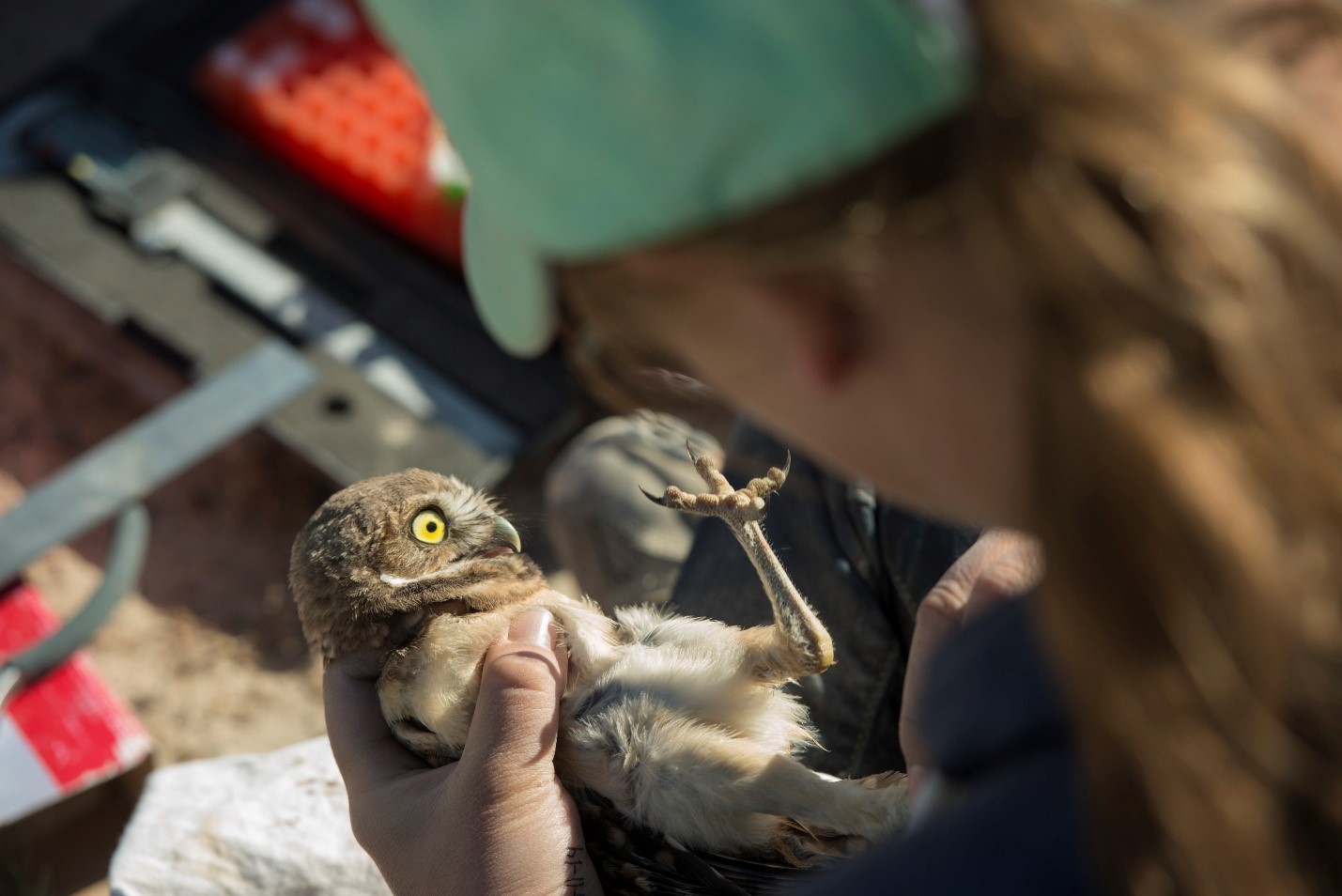Guest post by researchers Kara Navock and Jim Belthoff
Linked paper: Investigation of the geographic origin of burrowing owl fleas with implications for the ecology of plague by K.A. Navock, D.H. Johnson, S. Evans, M.J. Kohn, and J.R. Belthoff, The Auk: Ornithological Advances 136:1, January 2019.
Western Burrowing Owls (Athene cunicularia hypugaea) and Pulex irritans, the so-called human flea, have a curious host-parasite relationship. Although we’ve known about it for some time, many details of their connection remain unclear, including why it appears mainly in the northwestern portion of the Burrowing Owl’s range despite the fact that both species have much broader geographic distributions. We were interested in the potential interplay among the migratory movements of Burrowing Owls, the potential for dispersal of P. irritans through its affiliation with owls, and Yersinia pestis—the zoonotic (animal-transmitted) bacteria infamous for causing bubonic plague.
Outbreaks of plague continue to occur sporadically throughout western North America, and it is typically transmitted among susceptible rodent hosts via flea bites. Birds are generally thought to not be vulnerable to plague, but some researchers have suggested that birds of prey could move infected rodents between sites, thus contributing to the disease’s spread. We wondered if birds such as Burrowing Owls could instead be directly aiding dispersal of fleas, which could happen over much longer distances, perhaps even from plague-infected areas in the owls’ wintering range to their breeding grounds. Although P. irritans is not necessarily the key player in plague outbreaks in western North America, it is a possible vector, so a better understanding of the extent to which birds of prey facilitate its dispersal is important.
To help clarify the geographic origins of the fleas on Burrowing Owls, and therefore the potential for long-distance flea dispersal facilitated by migratory owls, we collected feathers, portions of toenails, and fleas from adults and nestlings in two breeding populations of owls in Idaho and Oregon. We then analyzed stable isotopes of hydrogen to decipher whether the fleas on owls had isotopic signatures reflective of owl breeding or wintering grounds. These isotope ratios vary predictably across the latitudinal gradient, providing a geographic map to help understand where our samples originated.

Our analysis was based on three assumptions: (1) adult owl feathers would show the isotopic signatures of the owls’ breeding grounds, because of the timing of feather growth, and (2) nestling toenails would have local breeding-ground hydrogen isotope ratios, but (3) adult toenails would reflect the isotope ratios of the owls’ wintering grounds, as toenails grow continuously and adults just arriving on the breeding grounds would have toenails recently grown in wintering areas. We reasoned that if the fleas we collected had hydrogen isotope ratios most like those of adult owl toenails, then they must have started out on the owls’ wintering grounds and hitched long-distance rides.
Assessing the hydrogen isotope ratios in over 250 fleas, we found that they were markedly different from the ratios in adult toenail samples, but they frequently matched those of the feathers and toenails of nestlings. This implies a breeding ground origin rather than a wintering ground origin for the fleas infesting the Burrowing Owls. Fleas from adult owls in the Idaho population however had a slightly more southern hydrogen isotope signature, which could mean that the owls were moving fleas over short distances, such as between recent migration stopovers and breeding grounds. However, we found no evidence of long-distance dispersal of fleas between the owls’ wintering and breeding grounds.
This lack of pronounced continent-level movement of fleas suggests that even during outbreaks of plague among wildlife, the chance of long-distance dispersal of fleas carrying plague bacteria is low, despite that Burrowing Owls in portions of their breeding grounds might be regularly “bugged” by P. irritans.
During completion of this research, Kara Navock was an undergraduate researcher participating in Boise State University’s REU Site in Raptor Research, funded by the National Science Foundation (REU Site Award; DBI 1263167 to JB) and Boise State University. In addition to authoring this manuscript, Kara was awarded a William C. Andersen Award for best student poster for her presentation at the 2017 annual meeting of the Raptor Research Foundation. As of January 2019, she is continuing her studies at Boise State University at the graduate level. Research into the ecology of Burrowing Owls and their host-parasite relationship with P. irritans continues in the Belthoff lab at Boise State University and through the Global Owl Project.
